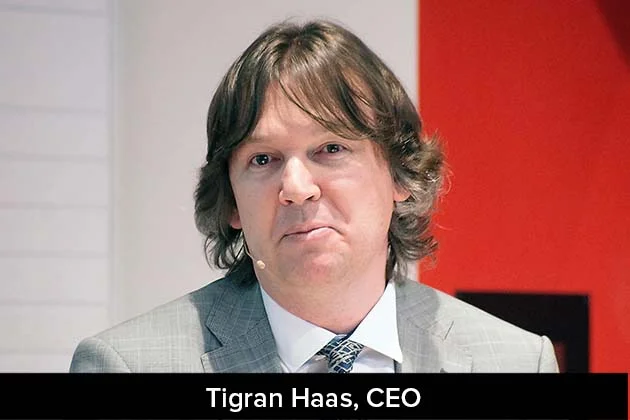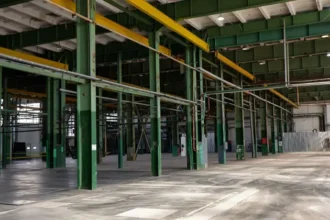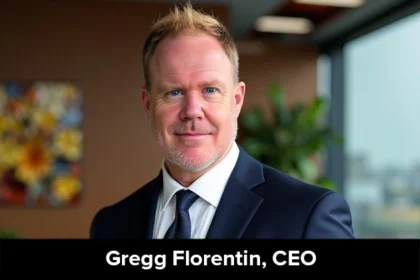Cover Story
Considered as one of the most technologically innovative countries in the world, Sweden boasts an abundant pool of talent in the form of students, researchers and skilled labourers. Thanks to institutes like KTH, who are known for their teaching pedagogy and research bent of mind, the country now hosts some of the best minds on the globe.
Founded in 1827, the KTH Institute is located in the beautiful city of Stockholm, Sweden. With its presence in various locations across the city, KTH collectively has around 13,000 full-time students, over 1700 PhD students and 2600 full-time employees. Aligning its vision with MIT, one of the leading institutions in the world, KTH is striving “to make a better world through education, research, and innovation”. Belonging to both these pioneer institutes Tigran Has, CEO of Centre for the Future of Places (CFP) centre at the KTH Institute, says these institutions provide a dependable source of solutions for diverse global challenges. Both the institutions continue to excel in this ambition through their research and innovation centres and labs. CFP is one such centre at KTH established to promote sustainable urban development.
Mission at CFP
The Centre for the Future of Places (CFP) was established in 2016 to tackle the inadequacies present in current city planning models. The working process of the CFP involves analyzing the various levels of human settlements, that is, neighbourhoods, towns, and metropolitan cities. The project also works towards creating healthy cities that comply with Urban Planning and Urban Design disciplines.
Speaking to CEO Views, Tigran Has, who now heads this division says- CFP’s primary mission is two-fold, the first being becoming a core source of research on Public Space and beyond. The other aspect of the mission involves conducting extensive research from a global perspective regarding urban planning and becoming a platform for new proposals and housing ideas. The centre hopes that the ideas and suggestions that come in will help overcome the present and future challenges seen in public spaces. The centre functions as a global platform for influential leaders in various sectors and across borders to create a self-sustaining as well as a prosperous world. Therefore, the mission to create the ideal metropolitan cities is not restricted to Sweden or European countries but extends to the third world and underdeveloped countries.
Explaining more on what makes CFP unique and so good, Tigran Has says- “well, world-class conferences, symposiums, talks, seminars, expert advice, education, books, research reports, consulting on best-case projects, and it goes on.”
From 2016-2021, CFP has experienced the dynamic synergy that results from the free flow of ideas and contributions of people from all backgrounds. We are also firmly committed to attaining and sustaining the highest level of quality in our research, associated programs and projects as well as a major push for internationalization on all levels. We put all of our support behind our post-graduate students’ work so that they have the broadest freedom to express their passion fully while experimenting with innovative ideas. With its holistic, interdisciplinary approach and project-based environments, CFP allows engaged groups of individuals to do their best work.
Diversity in the Institution
Diversity and inclusion is in the DNA of CFP and KTH. It is deeply embedded in the soul of the institution. Diversity and Inclusion in the workplace today must include understanding the following things: Race, Ethnicity, Gender, Sexual orientation, religious affiliation, Generation, Disability, Personality type, and Thinking style. It is crucial to hire and maintain a diverse workforce, so gender and racial/ethnic initiatives will be launched and maintained into the foreseeable future. Build an inclusive environment while using multiple practices and measures.
One of the keys for leadership strategy must be the (common, open, and sustainable) culture one creates, and that is what we read in best management books and practice in best work environments. Emphasis on employee wellness, provide meaning, create goals, encourage positivity but also work for hardship scenarios, foster social connections, listen but also do! Finally, as a CEO, one must encourage collaboration and communication when developing strong workplace culture and always facilitate learning opportunities, and champion those who do the job well!
Challenges and Learnings
When asked about the challenges that he faced in the past being a CEO at the CFP, Tigran Has responded that environmental concerns are surely a roadblock in this segment. Apart from this, others can be classified into 3 different segments- micro, meso and macro.
Micro being the immediate one with all the challenges of competencies, staff, tasks, immediate decisions, administration, and leadership as well as conflicts. The meso being the plane of projects, partnerships, cases on the ground, the cities where the work is being done, and also the products, the media, networks, etc. And finally, the macro with all the challenges and competition and major issues on the regional, national, and global level that influences the work and strategy of the place where one works. Roadblocks will be many from personal choices, communication, and decisions. The key thing is a tight organization with good leadership, a delegation of responsibilities where the chemistry functions and all are working towards a common goal, where mutual benefit must prevail individual gain and vanity.
Investments and Outcomes in Research and Innovation
Speaking about the institution’s commitment towards research and innovation, Tigran Has says, Since its inception in 1827, KTH has developed into one of Europe’s leading technical universities and an important knowledge development arena. As Sweden’s largest university for technical research and education, KTH brings together students, researchers, and faculty worldwide. Together with business and society, KTH is working on sustainable solutions to some of humanity’s greatest challenges: climate change, the energy supply of the future, urbanization, and quality of life for a rapidly growing, aging population. KTH’s research and education cover both science and all branches of technology and architecture, industrial economics, social planning, history, and philosophy. The innovative climate promotes versatile solutions, and KTH‘s education creates a new generation of engineers, architects, and teachers.
Since its initiation in September 2016, CFP’s staff and researchers have contributed to more than 150 new books, academic publications, book reviews, and research reports. Speaking further he says, We have pioneered a plethora of new systemic and clustered “Academic Conversations” – The Centre for the Future of Places Event Dictionary. The first-ever female academic series has been established, with 20 international scholars coming with the total number of events numbering over 200.
Impact of the Pandemic
Curious to know on how the premier institutions are coping up with the sudden challenges of the pandemic, we asked Tigran Has, CEO of CFP on what was the impact of the pandemic and what were the changes they had to make in their way of delivering education. Answering the same he said- University and college campuses such as KTH and MIT are places where students study, socialize, and live close to each other. They are also the nexus for social and cultural hubs where students are brought together from all corners of the world and where social and human capital is produced.
Due to the rapid spread of the coronavirus and the unprecedented impact it had on our society, they had to adapt to teaching, researching, and networking online. And most importantly, to do everything they can to protect their students’ lives faculty. Maximizing online learning and teaching, developing robust but flexible systems, gathering information, and applying the best practices have been some of the hallmarks of this di cult period, as well as great collegial and comradeship throughout. The higher education sector has withstood pandemics and turbulent economic times in the past, and it will withstand them again, preparing to be adaptable, resilient, and sustainable in the long run. In a network society, city of bits, and the new digital age, universities are better placed, more than ever, to provide students with an easily accessible online version of their courses. We have to learn and adapt, and we also need to prepare for the tougher challenges ahead of us, as unfortunately, there will be many more of these to come.
What’s ahead for CFP?
CFP has been an abundant source of productive information about an overlooked topic like urbanism for the last five years. The centre has offered an insight into cities and city policies in a manner like never before. The coming five years are an unpredictable time for CFP, as they can either choose to continue on the same path that they have been on for the last five years or decide to explore new territories. The latter would be revamping the centre’s research model and changing the perspective with which they looked at urbanism.
The aim to create sustainable cities is now taken up by countries worldwide after encountering a dip in their economic growth on account of the pandemic.
Also, the Centre will transform itself into a LAB. 2021 and 2022 will see the creation of experimental cities that are Liveable, Viable, and Intelligent. In addition to this, CFP will also provide much-needed insight into proper city planning for the UN habitat as the UN aims to build more shelters in third world countries and underdeveloped nations. The Centre for Future of Places in the form of a new lab called: HALCYON ATHENAEUM LABORATORY (HAL) will continue to research the four thematic fields: sustainable urbanism, urban transformations, housing, urban spaces, and human geography.
In addition to this, the KTH School of Architecture will continue to interact with UCL Bartlett in London, Harvard University, ETH Zürich, Chicago University, and MIT (especially LCAU and Senseable Lab) to further their research. The aim to create sustainable cities is now taken up by countries worldwide after encountering a dip in their economic growth on account of the pandemic. CFP’s legacy and HAL’s new work will help such countries create healthy and liveable cities, focusing on places and not objects.










